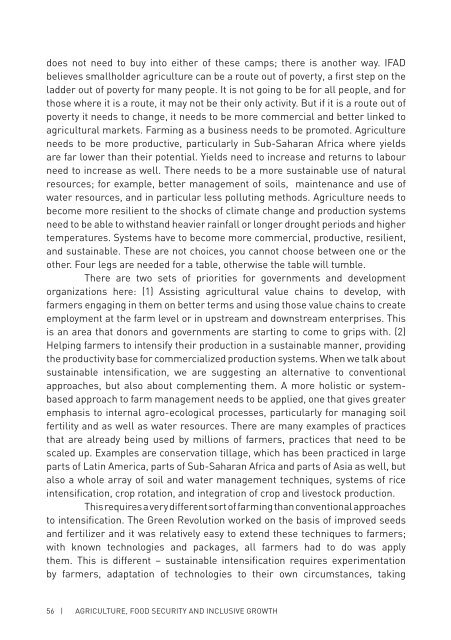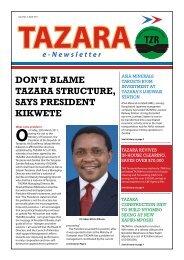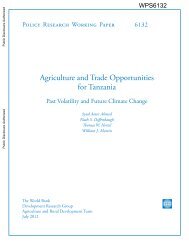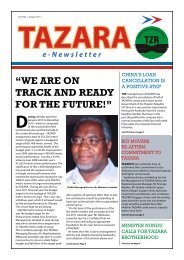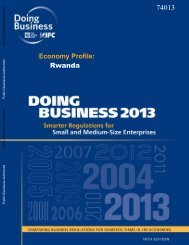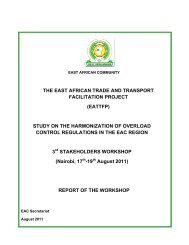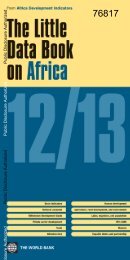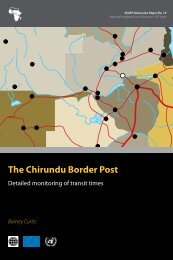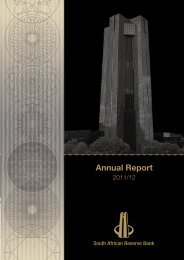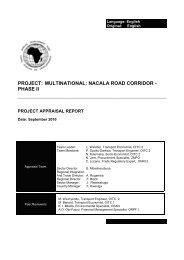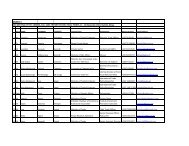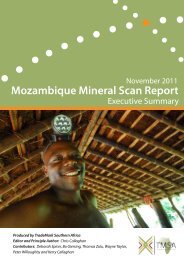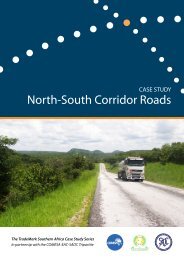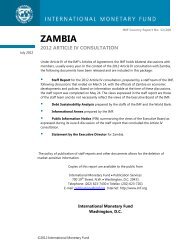Agriculture, Food Security and Inclusive Growth - SID Netherlands ...
Agriculture, Food Security and Inclusive Growth - SID Netherlands ...
Agriculture, Food Security and Inclusive Growth - SID Netherlands ...
Create successful ePaper yourself
Turn your PDF publications into a flip-book with our unique Google optimized e-Paper software.
does not need to buy into either of these camps; there is another way. IFAD<br />
believes smallholder agriculture can be a route out of poverty, a first step on the<br />
ladder out of poverty for many people. It is not going to be for all people, <strong>and</strong> for<br />
those where it is a route, it may not be their only activity. But if it is a route out of<br />
poverty it needs to change, it needs to be more commercial <strong>and</strong> better linked to<br />
agricultural markets. Farming as a business needs to be promoted. <strong>Agriculture</strong><br />
needs to be more productive, particularly in Sub-Saharan Africa where yields<br />
are far lower than their potential. Yields need to increase <strong>and</strong> returns to labour<br />
need to increase as well. There needs to be a more sustainable use of natural<br />
resources; for example, better management of soils, maintenance <strong>and</strong> use of<br />
water resources, <strong>and</strong> in particular less polluting methods. <strong>Agriculture</strong> needs to<br />
become more resilient to the shocks of climate change <strong>and</strong> production systems<br />
need to be able to withst<strong>and</strong> heavier rainfall or longer drought periods <strong>and</strong> higher<br />
temperatures. Systems have to become more commercial, productive, resilient,<br />
<strong>and</strong> sustainable. These are not choices, you cannot choose between one or the<br />
other. Four legs are needed for a table, otherwise the table will tumble.<br />
There are two sets of priorities for governments <strong>and</strong> development<br />
organizations here: (1) Assisting agricultural value chains to develop, with<br />
farmers engaging in them on better terms <strong>and</strong> using those value chains to create<br />
employment at the farm level or in upstream <strong>and</strong> downstream enterprises. This<br />
is an area that donors <strong>and</strong> governments are starting to come to grips with. (2)<br />
Helping farmers to intensify their production in a sustainable manner, providing<br />
the productivity base for commercialized production systems. When we talk about<br />
sustainable intensification, we are suggesting an alternative to conventional<br />
approaches, but also about complementing them. A more holistic or systembased<br />
approach to farm management needs to be applied, one that gives greater<br />
emphasis to internal agro-ecological processes, particularly for managing soil<br />
fertility <strong>and</strong> as well as water resources. There are many examples of practices<br />
that are already being used by millions of farmers, practices that need to be<br />
scaled up. Examples are conservation tillage, which has been practiced in large<br />
parts of Latin America, parts of Sub-Saharan Africa <strong>and</strong> parts of Asia as well, but<br />
also a whole array of soil <strong>and</strong> water management techniques, systems of rice<br />
intensification, crop rotation, <strong>and</strong> integration of crop <strong>and</strong> livestock production.<br />
This requires a very different sort of farming than conventional approaches<br />
to intensification. The Green Revolution worked on the basis of improved seeds<br />
<strong>and</strong> fertilizer <strong>and</strong> it was relatively easy to extend these techniques to farmers;<br />
with known technologies <strong>and</strong> packages, all farmers had to do was apply<br />
them. This is different – sustainable intensification requires experimentation<br />
by farmers, adaptation of technologies to their own circumstances, taking<br />
56 | AGRICULTURE, FOOD SECURITY AND INCLUSIVE GROWTH


